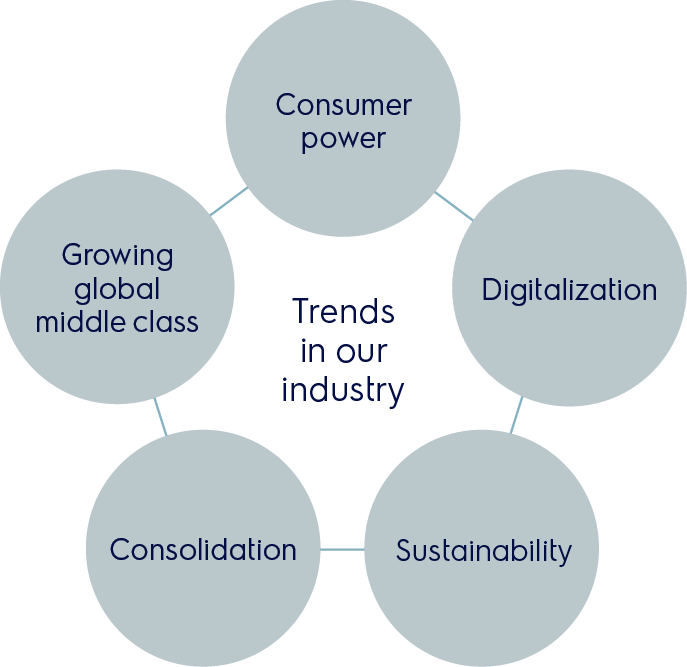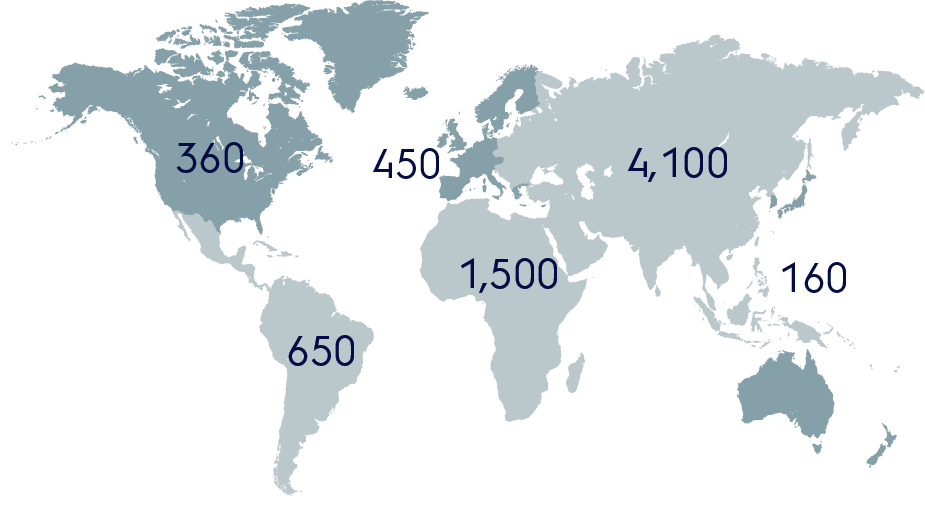The global market for household appliances is being transformed by five major trends: increased consumer power, digitalization, sustainability, consolidation and a growing middle class. While these changes are placing demands on investments and economies of scale, they are also presenting major opportunities.

The increasing pace of change in the global market stems from a number of trends that influence volumes and the types of products that are in demand, but also how these products are produced, marketed, and sold.
Consumer power is growing as increasingly well-informed customers easily can access information about prices, offers and product characteristics. This means that Electrolux, as well as other brands, need to offer transparent information about how the products and offers are differentiated to meet customer needs.
Digitalization plays an important role in increasing consumer power. Mobile solutions and access to the Internet place demands on Electrolux and increase opportunities to interact with consumers in new ways. Digitalization also provides substantial opportunities to develop increasingly advanced products, such as connected products, as well as making the Group’s operations more efficient.
Sustainability is becoming more important for customers and consumers as well as authorities, who demand that manufacturers develop and offer sustainable products. This trend has been apparent for a number of years but development is now accelerating at varying paces in the different regions.
A global middle class is growing as a result of strong economic growth in emerging economies. This trend has been visible for many years and will continue.
Consolidation in the sector is, to a large extent, driven by the above trends as they result in challenges that require major investments and economies of scale. Manufacturers and retailers of household appliances are becoming fewer, larger and more international.
The changing dynamics of the industry cause the Group’s traditional competitors to expand digitalization and smart home solutions. It also increases competition by bringing new competitors such as major digital actors and new startups that use technology to disrupt the value chain. Furthermore, the major changes in consumer behavior, and the accompanying increase in online sales, cause significant disruption in traditional retail.

Worldwide Digital Indicators
+25%

SOCIAL MEDIA USERS
+29%

SMARTPHONE USERS
+112%

B2C SALES ON-LINE
WORLD WIDE, USD
+600
million
+600
million
+700
million
+ 2.6
trillion
Source: Emarketer and Electrolux estimates.
The global market for household appliances can be split into two parts. In the mature markets (Western Europe, North America, Japan and Australia/New Zealand), population growth is low and sales are dominated by replacement products. However, growth markets (Africa, the Middle East, Eastern Europe, Latin America, Southeast Asia and China) are characterized by rapidly rising living standards and a large number of new households being able to invest in appliances and other household products.
During 2017, demand for appliances increased in both growth markets and mature markets. Demand for appliances improved across most markets during the year such as in Latin America, Eastern Europe, North America, Australia and Southeast Asia. In 2017, the demand in growth markets represented about 65% of the total market volume compared with 50% in the year 2000. Growth markets accounted for about 30% of Electrolux sales for the year, and the objective is to increase this share.
Million

13%
Population in
Electrolux core markets
Western Europe, North America, Australia, New Zealand, Japan
87%
Population in
Electrolux growth markets
Africa, Middle East, Eastern Europe, Latin America, Southeast Asia, China